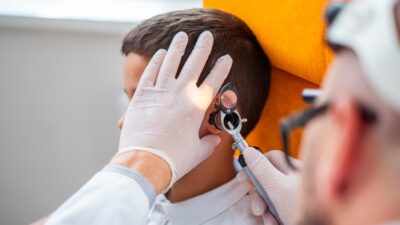Invisalign Sydney was first developed in 1997 by Zia Chishti and Welsey Wirth, two students at Stanford University. Chisti was undergoing adult orthodontic treatment, and when he started wearing a retainer, he came up with the idea that an appliance similar to a retainer could perhaps carry out the entire straightening process. He partnered up with others on his campus, and together, they came up with the brand, Align technology. After finding their first investors, they started developing Invisalign Sydney. This included much research into CAD modelling and 3D printing to design and develop a modern and successful method of teeth straightening which works without metal wires and brackets rather uses clear thermoplastic aligners and is therefore comfortable and almost invisible when worn in the mouth.
By 1998, the FDA granted approval for Invisalign and in 1999 it was available for the public.
Invisalign Sydney has now been established for 24 years, and during this time it has helped correct more than 14 million smiles across the world. Invisalign Sydney is used by patients of all ages. A huge percentage of patients are teenagers whilst the rest are adults who either avoided orthodontic treatment when they were younger, because they were afraid of braces or embarrassed by braces, or adults who have previously undergone orthodontic treatment with traditional braces, and are looking to enhance their smiles further. There is no upper age limit for Invisalign, and if you have healthy teeth and gums, then you are welcome to undergo Invisalign for teeth straightening at any age.
Table of Contents
How does Invisalign work?
Your dentist will put together an individually tailored treatment plan for you. Each Invisalign aligner is customised and designed using the latest in digital dental technology. Models of the aligners are 3D-printed, and moulded using a patented thermoplastic which is free of latex and BPA. The aligners are designed to be comfortable in the mouth and smooth around the edges, preventing any cuts and sores. They are contoured to fit snugly over your teeth and rest on your gums without causing gum soreness or discomfort. They should be tightly fitting so that they can exert enough pressure to push your teeth into a neater formation which means when you first wear the aligner you may feel some discomfort which should go away with paracetamol and will naturally disappear after 12 to 24 hours. You should then become accustomed to that aligner and you need to wear it for at least 22 hours of the day for two weeks, removing it at the prescribed time of eating and drinking and brushing your teeth. During this time the aligners should move your teeth by approximately 0.25 mm and then you move onto the next aligner in the series.
The number of aligners that you need vary from patient to patient. Some patients can straighten their teeth within as little as 6 months whilst others can take 12 to 18 months if they have more complex orthodontic needs. By speaking to your dentist you will be able to find out how long the treatment will take and how much it will cost.
Invisalign may be more expensive than traditional orthodontic treatment however, it offers comfort, convenience, and discretion and is therefore a preferred alternative for the modern generation. The treatment time with traditional braces and Invisalign aligners is very similar for patients with similar orthodontic needs. However traditional braces are fixed into your mouth which means they work constantly. If you choose to straighten your teeth with Invisalign, then you have to be very diligent and make sure that you are wearing the aligners for the correct amount of time each day. If you are unable to adhere to the guidelines then you will find that the treatment process will be unsuccessful. Each aligner is designed to move your teeth by a certain amount in two weeks, and if they are not worn for the correct amount of time then your teeth will not have moved properly, and the next aligner will not be able to work properly either. This will mean that you may have to get a new set of aligners which will be more expensive and the treatment time will be longer than expected.
Speak to your dentist today and find out more about Invisalign and if it is the best option for you. Your dentist will take into consideration your orthodontic needs as well as your personal preferences. If not, you can speak to your dentist and find out about traditional braces and whether or not you can have a combined treatment plan of both.
Undergoing any surgical or invasive procedure involves potential risks. Before making a decision, seeking a second opinion from a qualified health practitioner is advisable.










Comments